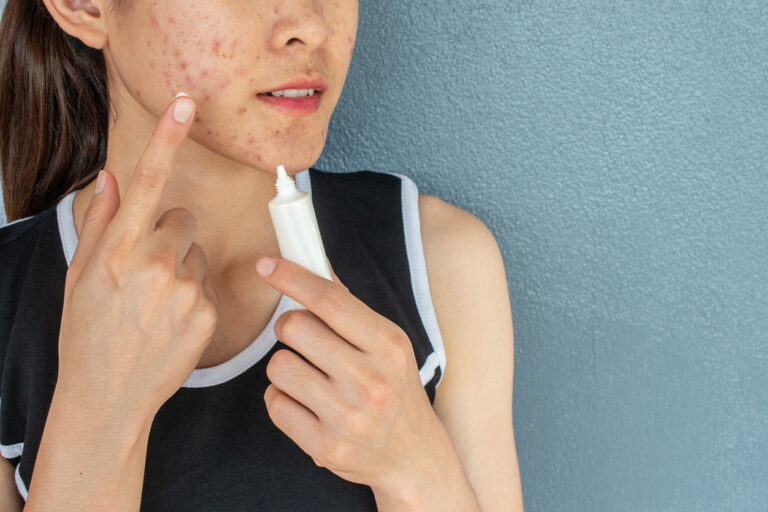Along with the welcome knowledge and wisdom of age comes a host of unwelcome side effects. For instance, our faces show the aging process as the bones, skin, and fat begin to thin. We soon see fine lines and wrinkles appear where there was once smooth, plump skin. Thankfully, advances in modern science and medicine have provided us with ways to offset aging’s appearance. One such advancement is in the area of dermal fillers.
A Solution for Fine Lines and Wrinkles – Injectable Dermal Fillers
We all age differently and have different needs when it comes to dermal fillers. Thankfully, there are various types of dermal fillers to meet those needs. Your facial rejuvenation goals will aid in the selection of the kind of dermal filler your provider recommends. Some work better in specific areas of the body than others. And each has its associated risks, safety, and various levels of tolerability depending upon the individual. Ultimately, which type of dermal filler you choose will result from the conversation you have with your board-certified dermatologist provider.
Calcium Hydroxyapatite (CaHa)
CaHa (calcium hydroxyapatite) is highly compatible with human tissue and is long-lasting (12 months on average) but not permanent. It does require additional injections once the initial effects start to wear off. Radiesse® is a type of CaHa filler that is FDA approved to improve moderate wrinkles and folds in the face. It is also often used to improve the appearance caused by fat loss associated with HIV. Fortunately, for those who appreciate a little anesthetic medication to improve our comfort, CaHa is available with lidocaine. If you prefer or require CaHa without lidocaine, that is also available.
Hyaluronic Acid (HA)
Injectable hyaluronic acid (HA) is a temporary dermal filler. The chemical hyaluronic acid is already found naturally in our bodies. The hyaluronic acid in the skin attracts water and helps the skin look more hydrated. Injectable HA often shows immediate results that last an average of 6 to 12 months, depending upon the area in which it is injected. Brand names of hyaluronic dermal fillers include:
- Belotero Balance®
- Juvederm Ultra® and Juvederm Ultra Plus®
- Restylane®, Restylane Silk®, and Restylane Lyft®
- Voluma®
Your provider can apply a topical or injection numbing medication before the procedure to improve your comfort. For additional comfort, lidocaine is also mixed with many of the available hyaluronic acid fillers.
Polylactic-L-Lactic Acid (PLLA)
Polylactic Acid (PLA) has been around for more than 40 years. Thus, it has a large number of applications. Impressively, it is used in biodegradable everyday products, 3D printing, and cosmetic rejuvenation. PLA comes in various types, such as Poly-D-lactic Acid (PDLA), Poly-DL-lactic Acid (PDLLA), and Poly-L-Lactic Acid (PLLA). PLLA is what is found in most facial fillers.
PLLA fillers are synthetic, containing special microspheres. The human body recognizes these microspheres as foreign and, consequently, produces more collagen, which creates anti-aging qualities. Remarkably, PLLA fillers have a duration of approximately 2-years. The downside is that it can take multiple injections before you notice a difference.
Brand names of PLLA fillers include Sculptra® and AestheFill®.
Polymethyl-Methacrylate Microspheres (PMMA)
Polymethyl-Methacrylate Microspheres (PMMA) have a dense texture due to the gel’s small spheres; this and its typically 80% mixture of collagen. PMMA is used to reduce the appearance of fine lines and wrinkles. Unlike other dermal fillers, PMMA is not reabsorbed into the skin. PMMA dermal fillers are used to treat medium-to-deep wrinkles and can be used for pitted scars or to enhance thinned lips.
Brand names of PMMA include Bellafil®.
An Overview of Dermal Filler Treatment Options
For most patients, the dermal filler procedure is straightforward and performed right in their dermatologist’s office. It provides low risk and quick results. Medical spas often offer dermal fillers due to their predictable nature and minimal risk.
Talking with your surgeon or dermatologist, you can find the best type and volume needed for your specific desired results, age, and skin type. The severity of the issues you want to address will also affect your choice of dermal filler.
The significant differences in chemical makeup mean your best type of dermal filler might have differences in longevity and softness.
Understanding the benefits and drawbacks and how each type of filler works to achieve the results you’re looking for should significantly factor into your consideration. Plus, you’ll understand what to expect.
Not all options offer instant results, and your needs may require multiple procedures.
Questions? Call Dilworth Dermatology and Laser at (704) 228-8287.



